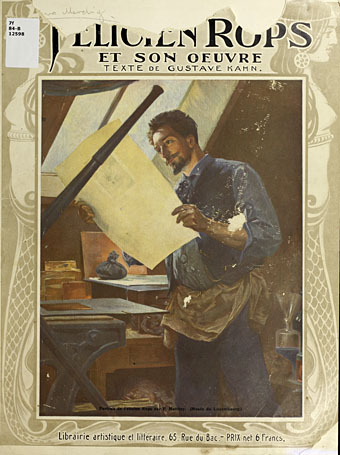
More Belgian Symbolism of a kind, although it’s debatable the degree to which Félicien Rops should be regarded as a Symbolist even though his work is generally listed as such. Decadent, certainly, and he did touch on popular Symbolist themes such as the temptation of St. Anthony, but only as part of his persistent obsession with that very fin-de-siècle icon, the Bad Woman. In Rops’ work this manifests as a succession of hollow-eyed femmes damnées—erotomanes, seducers and addicts—all of whom resemble each other.
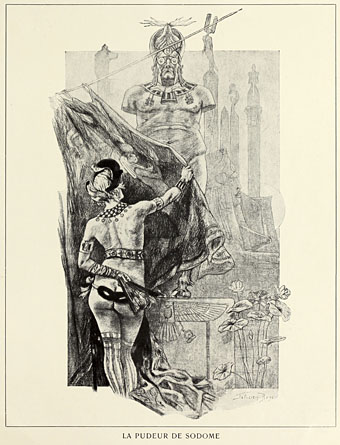
Félicien Rops et Son Oeuvre (1900) is a short monograph by Gustave Kahn which is is mostly of interest for the self-portraits and minor pieces, those drawings and prints that you’d only find now in a comprehensive examination of the artist’s career. In 1900 Rops’ overtly erotic drawings wouldn’t have been available outside private publications whereas today, in a reversal of fortune that might have surprised the artist, these are the works of his that everyone likes to see. The Internet Archive has a later study by Gustave Kahn which includes some of the more erotic pieces seen here, none of which are too explicit but there’s enough that his book might have encountered legal disapproval if anyone had tried to sell a copy in England.
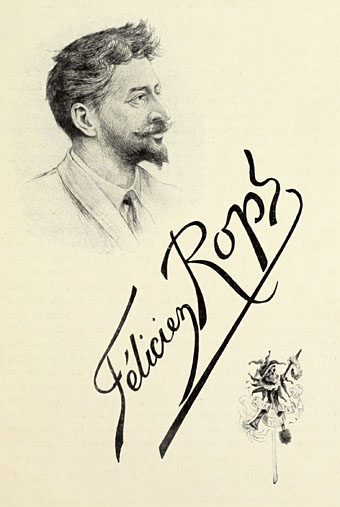
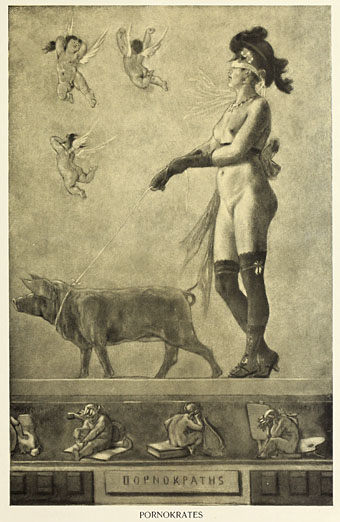
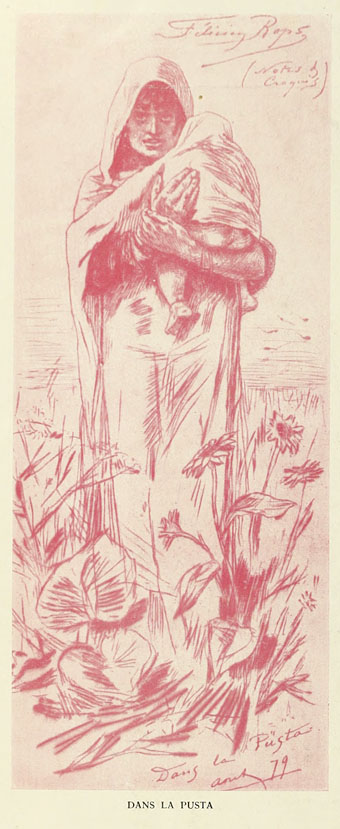
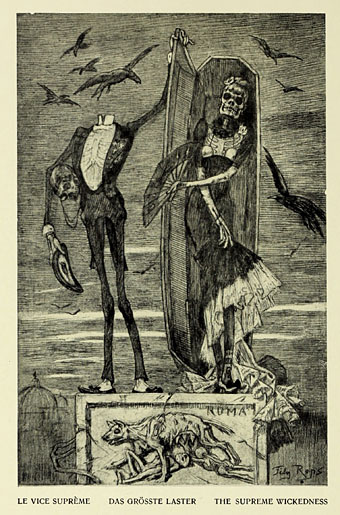
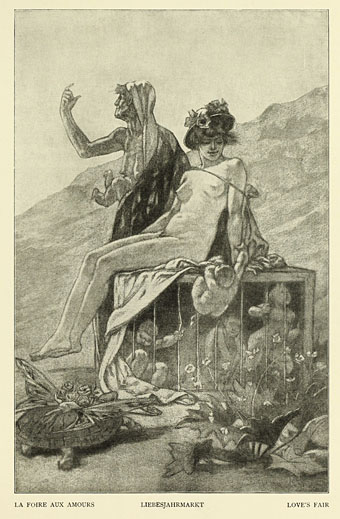
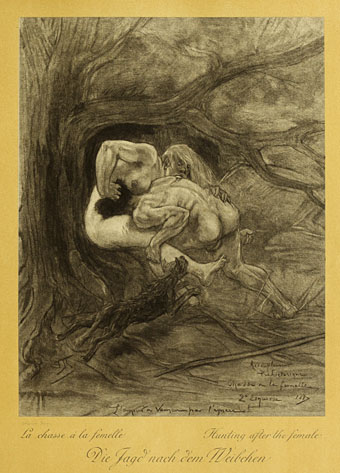
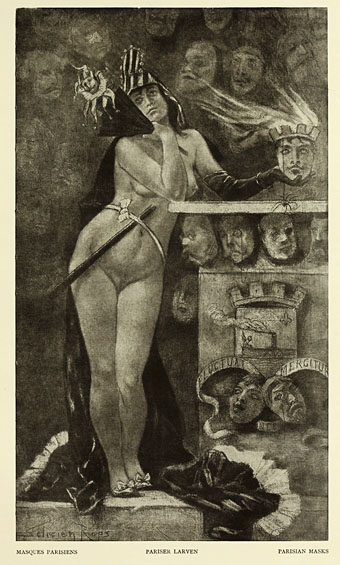
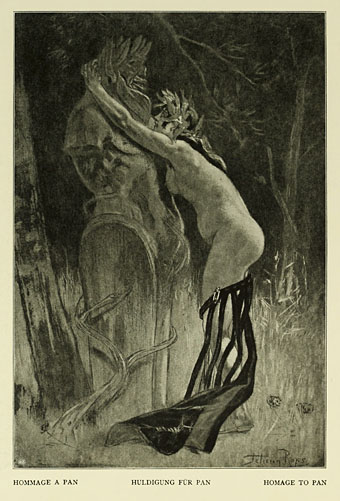
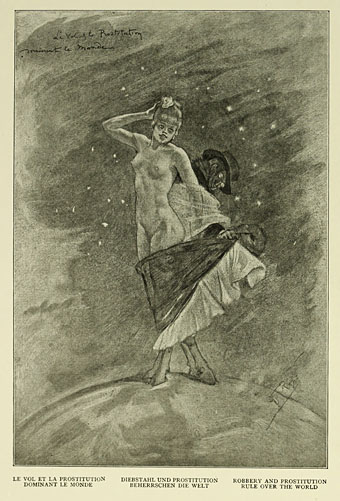
Previously on { feuilleton }
• The art of Félicien Rops, 1833–1898

Rops was the author of “Satan semant l’ivraie” (Satan sowing discord), that was the inspiration and the original cover (in a slightly reworked version) of Giorgio De Maria’s cursed masterpiece “The Twenty Days of Turin” https://www.goodreads.com/it/book/show/30285138-the-twenty-days-of-turin
Thanks, Luca, I’d not seen that cover. The Rops picture seems to be one of his more popular drawings, you see it reproduced more than many others probably because it’s a rather striking symbolic (or even Symbolist) piece. I love the way the figure is using Notre-Dame as a stepping-stone.